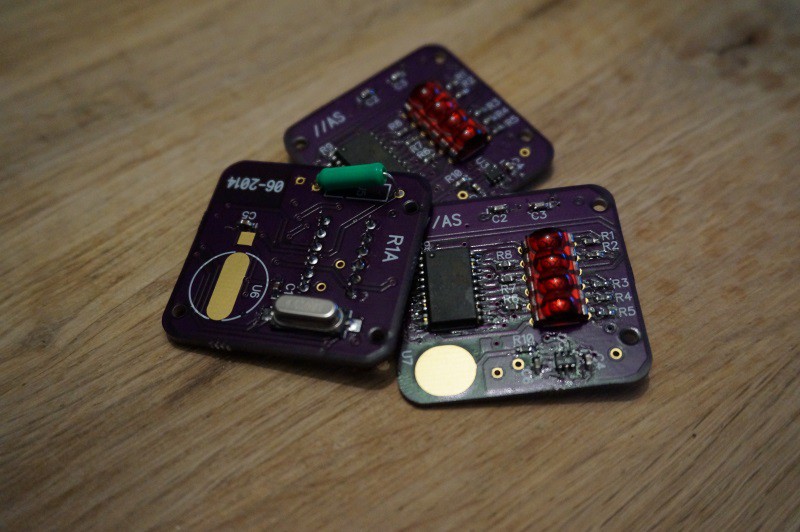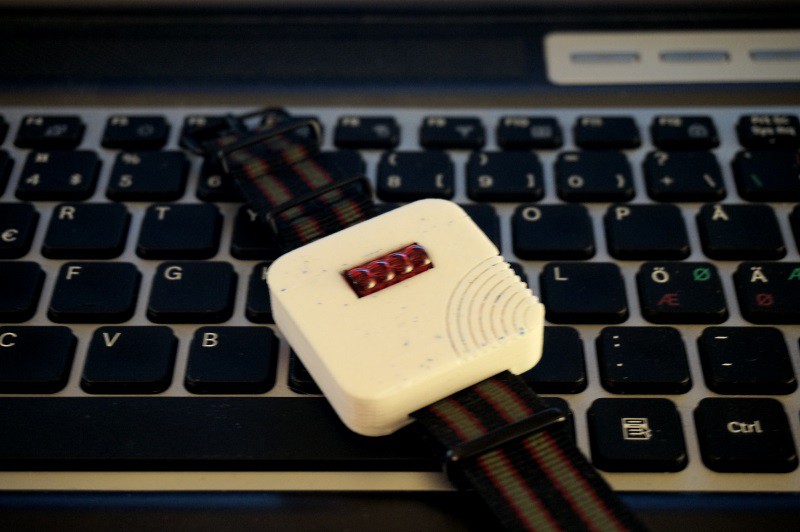-
Summer has come in the way
08/17/2014 at 21:01 • 0 commentsThe project has been on hold for the last couple off week because off: Summer. The weather has been to good to bee sitting inside hacking on the project. But with the dead line coming up I better get started again.
I have soldered together the prototype PCB and gotten the display and tilt sensor working with out any problems, the touch sensor is still acting up and needs some more TLC before it is ready for prime time. I also realized that syncing the time to the PC with help of the touch sensor probably isn’t a good idea, so I will be changing over to an optical system. I have one GPIO left on the avr where I will add a photodiode/transistor. The photodiode will be held against the computer screen where a Python script will send the current time by flashing the screen. This way of communication also has the advantage of also working with smartphones and tables.
-
Solder Time
06/24/2014 at 20:32 • 0 commentsThe PCBs and components have arrived time to heat up the soldering iron!
-
Designing the case
06/17/2014 at 21:41 • 0 commentsI'm still waiting for the PCB to arrive so in the mean time I have started designing the case for the watch. I started off using openSCAD as my 3D CAD software since I have used it before and it is open source. But after a while I got frustrated with having to descried the design in code and started using Designspark Mechanical instead, a great free (but not open source) piece of software.
![]()
Watch Case V1
-
PCB and Component choices
06/02/2014 at 21:14 • 0 commentsI sent my PCB to the manufacture (oshpark.com) and it has already added it to a panel :-) hopefully I will have the PCBs at the end of the month. The only thing I forgot was to add a way to program the microcontroller... But that can be solved by soldering the programing wires directly to the pins.
When it comes the components I tried to choose packages that didn’t have super extreme pitch but still keeping them surface mount to keep the size of the PCB to a size that would fit on a wrist. For the microcontroller I chose the ATTiny2313 in a SO-20 package mostly because I have used allot of Atmels microcontroller in other projects but also because Atmel seem to have a large support in the OSH/maker/hobby hacker community. For the capacitive touch sensing I chose a IC from atmels Qtouch line, the reason for choosing to go the IC rout instead of having the microcontroller do the sensing is simply that this seemed like a simpler and faster way to get up and running.
The other components are 0603 resistors and capacitors a crystal oscillator and a tilt switch.
Tilt Touch Time
A tilt and touch activated wristwatch using a "retro" style bubble 7 segment display.

